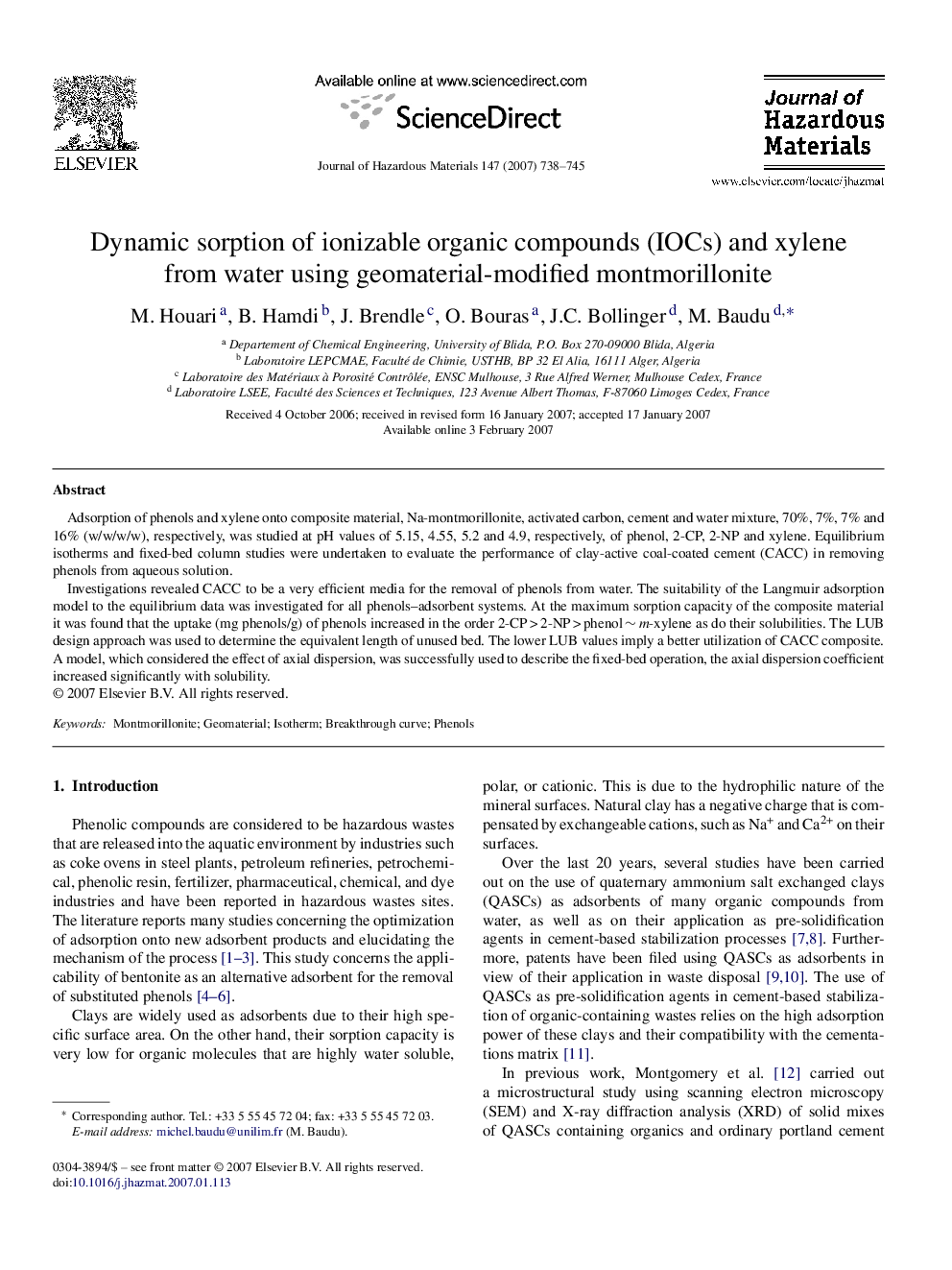| Article ID | Journal | Published Year | Pages | File Type |
|---|---|---|---|---|
| 583862 | Journal of Hazardous Materials | 2007 | 8 Pages |
Abstract
Investigations revealed CACC to be a very efficient media for the removal of phenols from water. The suitability of the Langmuir adsorption model to the equilibrium data was investigated for all phenols-adsorbent systems. At the maximum sorption capacity of the composite material it was found that the uptake (mg phenols/g) of phenols increased in the order 2-CP > 2-NP > phenol â¼Â m-xylene as do their solubilities. The LUB design approach was used to determine the equivalent length of unused bed. The lower LUB values imply a better utilization of CACC composite. A model, which considered the effect of axial dispersion, was successfully used to describe the fixed-bed operation, the axial dispersion coefficient increased significantly with solubility.
Related Topics
Physical Sciences and Engineering
Chemical Engineering
Chemical Health and Safety
Authors
M. Houari, B. Hamdi, J. Brendle, O. Bouras, J.C. Bollinger, M. Baudu,
